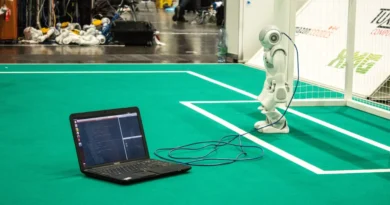What is Commodity Hardware?
Off-the-shelf hardware, or commodity hardware, is the type of hardware that is often sold in places like computer and accessory stores. They are cheap and, if compatibility is ensured, may be used with a wide range of electronic gadgets.
As an example of commodity hardware, we may think about servers, cables, and pretty much anything else necessary to operate or link IT or computer equipment in a network. Because they are “plug and play,” they should automatically activate when connected. The wires used to link many servers together are one good example. They will function automatically without any intervention from you. Simply insert them into the appropriate openings, and you’ll be ready to go.
By utilising commodity hardware, networking may now be made available to a broader variety of businesses. Companies may save between US$5,000 and US$20,000 by converting a standard server priced at roughly US$600 into a RAID server by employing commodity hardware.
Also Read: What is the Computer Booting Process?
Why Do Companies Need RAID Servers?
Businesses of all sizes need to make sure their operations that rely significantly on computers are available at all times, given the present condition of the threat landscape in which attackers go after firms regardless of size. Their websites are very vulnerable to distributed denial-of-service assaults (DDoS). They should not worry, though, if they use cheap hardware to transform standard servers into RAID servers. If one of your RAID servers goes down, the others will automatically boot up and take over.
The business may keep running with the backup data even if ransomware infects the network. It will still have the data it needs even if the threat actors don’t return its files.
Why Is Common Hardware Preferable?
As was previously indicated, this hardware allows even the most financially challenged enterprises to guarantee 100% uptime and enable speedy catastrophe recovery. To name a few:
Inexpensive:
Price-wise, generic gear is significantly more attractive than name-brand alternatives.
Super simple:
They are easy to set up and fine-tune since they are compatible with various platforms.
Easy to obtain:
Standardized hardware is widely distributed and may be purchased from any computer or IT store.
Promotes rapid recovery from catastrophic events:
In the event of a fire, flood, or another emergency at your main location, you may be certain that your business will continue to function normally if you use commodity hardware for off-site backups.
Keeping in touch with information:
When you have a backup of the data your company relies on, you can keep operating normally even if you experience a cyber assault.
Should Hadoop Be Used When Working With Common Hardware?
Hadoop is an open-source system that allows users to create parallelism by connecting and utilising commodity gear. The term “parallelism” is used to describe the practice of improving the speed of a programme or having it conduct numerous calculations at once. It may not be able to convert a standard server into a RAID server without Hadoop.
When used on standard hardware, Hadoop guarantees the following:
Scalability:
Particularly when dealing with massive amounts of data, you may make use of as many servers as you have at your disposal.
Save money:
To process massive volumes of data, you might not need to invest in expensive technology after all.
Flexibility:
In other words, you may buy as many or as few servers as you typically need to handle your data needs.
Defect tolerance:
Each data point is replicated on two servers, so you always have a backup.
Strength in numbers:
High-powered servers are unnecessary. As long as you have a sufficient number of them, low-end servers will do.
Capacity to manage and store massive volumes of data of any kind:
The quantity of servers you need depends on the amount of your data.
Is it possible to explain how Hadoop operates on standard hardware?
Hadoop must be installed on all servers using commodity hardware. That gives each of them a portion of the data to process or analyse. This means that while all the servers will have some information, no one will have everything. Some data is replicated over two servers in case one of them goes down. The concept of parallelism is demonstrated there. The whole dataset is processed in parallel by all of the servers, with a single goal in mind.
Conclusion
Due to the widespread availability of commodity hardware, even the most modest business can afford to set up a network and begin processing massive amounts of data.




